Douglas Buel
United States
Saint Louis
Missouri
-
What I Know About Magic: The Gathering
I’m afraid the title of this article may seem misleading to some. I can’t really tell you everything I know about Magic: The Gathering. What anyone who has played Magic for a while might know, and that includes me, would fill a book. Several books. In fact, just the Magic cards a regular player might know would not fit in a book. This is true. A decent Magic card collection will not fit in a book. Not remotely. And that’s just the cards. How to play them? Even more complicated than the cards themselves.
Instead, I will tell you some of what I know. I’m going to try to tell you the important things. Since I can’t tell you everything, I’ll just tell you the first 7000 words.
Now, you should know that I am not going to explain the rules of Magic: The Gathering. Also, you should know that I am not going to tell you how to draft or how to play sealed deck and so on. I am aiming this discussion at the BGG user; the BGG user plays board games, knows a lot about them and maybe wants to play Magic once in a while. I assume that you like to build your own decks.
Let’s talk about building decks.
The Life Cycle of a Noob
Did you hear about the guy who tried to play Magic? Here’s what happened to him. Somebody taught him the rules, and maybe gave him a deck to play. He said to himself that this seems fun, and wouldn’t it be more fun to get some cards and build my own deck? That’s the point, isn’t it? To build my own deck.
Then he maybe saw a card like this:
Oh, wow, you know what? If you put more Goblins in a deck with these King things, they’re even better than normal! I’ll be smart and play creatures that work with one another. This is way more fun than just playing cards at random.
And so then he played a bunch of Goblin cards, and it was fun. And then maybe his friend played these cards:
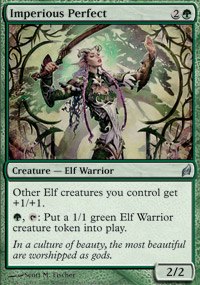 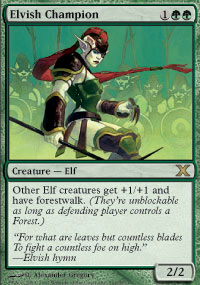
Why, these Elf guys seem even better than those Goblin guys. They work together even better. I’ll play them instead.
So he did that. And this went on for a while, and then later he said to his friends, here’s my Zombie deck, and here’s my Cleric deck, and here’s my Beast deck, and so on and so forth.
Magic became to him a game about playing the most synergistic army.
Then, one day, he ran into something like this:
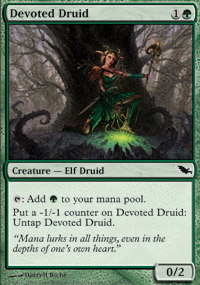 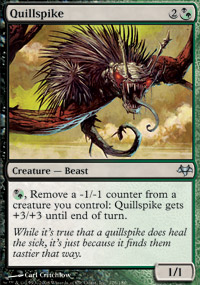
His friend got out these two guys. And then the friend did this:
1. Tap Druid for mana
2. Put a -1/-1 counter on Druid to untap it
3. Use the mana I just got to remove the counter from Druid and make Quillspike bigger
4. Go to 1
And the friend made Quillspike arbitrarily large. Infinite! Well, not literally infinite, because at some point you have to stop doing it and continue with the game. Gargantuan. And then maybe the friend played something like this:
And the game was over.
What the hell was that?
Well, that was a combo.
At this point, our player quit Magic forever, didn’t care about losing, or decided to do something about these combos.
The Third Wave
Assuming he didn’t want to quit and doesn’t like to lose, he decided to do something about it. One day he discovered these:
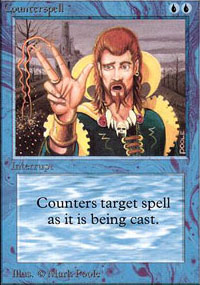 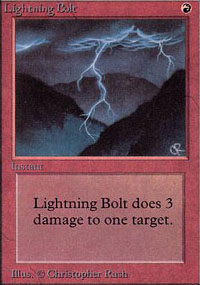 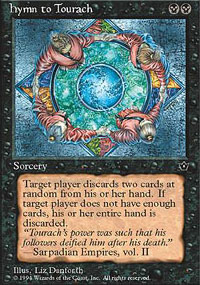
Hey, you know what? Your dumb (his words, not mine) Quillspike combo doesn’t do a whole lot if you can never play your Quillspike. Or if you can never play your Rite of Consumption. Or if I always kill your Druid. Or if you can never et cetera. Our player had discovered control. Control beats combo all day long. Go ahead, try your stupid combos, our player said. I’ll just kill your guy. Or counter your spell. Or make you discard your cards before you can play them.
However, our player’s control deck still loses to his friend’s Elf deck. There are just too many Elves to counter! Or bolt! Oh, well. At least it wins sometimes.
Our player, who has made it through the attrition process that picks off a lot of would-be players, has experienced, maybe without realizing it overtly, the most fundamental version of Magic’s “Metagame Clock.” Specifically, he’s just learned how there’s an aggro-control-combo cycle in Magic. Basically:
Aggro loses to combo
Combo loses to control
Control loses to aggro
Aggro -- The principle of aggro is to play as many threats as possible. Any of them can win. All of them together can win pretty fast. Counterspells and the like can’t stop all the threats. Some creatures just plain can’t be countered or targeted. Your deck of Shocks can’t stop my guy with protection from red. And so on.
Combo -- Well, you saw it just a moment ago. If you put certain cards together, you just win. A good combo deck is way faster than an aggro deck. Sure, for your first four turns you hit me with your guys. Now it’s my turn. You’re dead. And I didn’t even have to attack.
Control -- Stopping what’s important to stop. The combo deck can’t go off without all its pieces. Only one key piece needs to be stopped, and then the combo doesn’t work.
Most noobs quit before they understand this. I’ve seen it. I’ve seen the noobs with their creature decks, and they lose to their friends’ combo decks. And then someone tells them, hey, you’re going to need to play some way to deal with your friends’ decks, and they say they don’t like to be told what to do. They complain that you shouldn’t have to do certain kinds of things. You should be able to do whatever you want. Then they quit.
But not our player. He has persevered, and he’s with us all the way. He knows that “doing whatever you want” in the context of a game can’t mean “ignoring what works” if you also want to win.
[continued in next post]
-
Douglas Buel
United States
Saint Louis
Missouri
-
Tick-Tock
OK. He’s played all three of these basic types of decks. Or at least, he’s seen them. He understands that sometimes, some decks just beat other decks. He gets that.
But it seems like his decks just aren’t as good as yours. He tells you this. You don’t even have to break it to him. He knows. When he builds an aggro deck, your deck beats it; and then when he builds a control deck, your deck still beats it. It’s like your deck does several things at once.
Well. I’ll tell you. The aggro-combo-control cycle is great for a simple explanation. But there’s really more to it than that. What I want you to do is imagine a clock. Aggro is at 12. Combo is at 4. Control is at maybe 8 or 7 or so.
As you know, because you can read, each of the three things on our clock beats the thing immediately before it. Right? Combo beats aggro. Control beats combo. Aggro beats control.
The fact is, there are other things on the clock between those first three.
You should know that I did not invent this. This is called The Metagame Clock. As far as I know, the first person to write about The Metagame Clock was Leon Workman, who wrote about it for a defunct site called The Dojo. I don’t have a link to the original article. That site is gone. There are plenty of subsequent articles about it; and now here’s one more.
Looking at this new clock, you see that there are a few more things than the aggro, combo and control that I mentioned before. What’s going on here with this “midrange” thing? Well. Have a look at this card:
This is the archetype midrange card. You might think at first that it’s a control card and that it therefore should be with control on the clock. No. That’s the genius of those who came before me -- to realize that midrange belongs where I have it above, at around 2 o’clock. You see, the principle of aggro is to play lots of threats, because any of them will do the job if unchecked. Control tries to stop them one at a time.
Midrange stops all of them all at once.
The principle of midrange is clearly visible and blatantly obvious card advantage. I destroy multiples of your cards, all at once. Noobs do not grasp the concept that this is a normal part of the game. If I’ve seen frustrated noobs want to quit playing because they didn’t understand what we were talking about earlier, I’ve seen scores of them quit because they didn’t understand what we’re talking about now. “Oh, god, you’re playing a ‘Wrath deck’? I don’t want to play anymore!” Seen it. Literally.
If you put all of your eggs in one basket, someone is going to destroy the basket. It’s a game, and the object is to win. Right? We’re all winners here, and we want to win. So we play what wins. And midrange wins against aggro. All day.
Notice how midrange lies after aggro on the clock? The clock works just like before -- each thing on the clock beats other things. It turns out that each thing on the clock beats whatever lies up to a half an hour before it, and loses to whatever lies up to a half an hour after it. Basically. I mean, assuming no mana screw or whatever. All other things being equal. Midrange is after aggro on the clock, so it beats it.
Notice that midrange lies before combo. What good is Wrath of God going to do you if I have a combo that doesn’t use creatures? No good. Combo typically crushes midrange. Sometimes it’s just faster, and other times it just doesn’t need to take any risks until it plays the combo pieces. Either way, midrange loses.
And then, on the clock, what’s that aggro-control thing going on over there? Let me explain it to you. Two guys sit down to play. One guy has Counterspells and a big flying creature that he’ll eventually play later. The other guy also has Counterspells, but he has a few really cheap flying creatures.
The second guy plays a really cheap flying creature before the first guy has enough mana to counter it. Then the second guy starts attacking. Both of them have Counterspells. What happens now? The first guy never does anything, and he’s dead. Sure, maybe he tries to play his big flying creature before he dies. But the second player has Counterspells too. He just counters it. That’s aggro-control. Kicking control’s ass up and down the block.
I didn’t put anything on the clock at 6 specifically. Control really runs all the way from around 6 to around 8, depending upon the type of control. Discard is really good against Counterspells, so control that’s discard might be more toward 8 while control that’s pure Counterspells might be more toward 6. Technically, the more “pure” your control is, the more it’s toward 6 instead of 8.
You see here that each new archetype still has some that it beats and some to which it loses. It’s a lot like before, when we just had aggro, combo and control. Rock-paper-scissors, but with more than three things. It’s a little more complicated than before, but you can still follow it pretty easily.
Having it Both Ways
But what’s the point?
Well. Remember our player. He knows that combo beats aggro and that control beats combo. But he still loses. All the time. He never gets better! What is going on, he asks?
Let’s say we’re his opponent. We have this really fun blue and white deck. It plays Counterspells, Wraths and some Angels. Every time he gets out lots of creatures, we Wrath and then kill him with Angels. Every time he tries to play his combo deck, we Counterspell his combo and kill him with Angels. With the same deck! It’s like he can’t win!
See, our deck is playing two sides of the clock.
If he tries to play lots of guys, it’s like he’s playing at 12. So we play at 2 by Wrathing his board. As you saw on the clock, 2 beats 12. If he tries to combo, which is like playing at 4, then we play at 7, and Counterspell his combo. Either way he goes, we get ahead of him.
This is the difference between a consistent deck and a truly good deck. At first, the noob learns that instead of playing random junk that he got from the common bin, he should play cards that work together. Consistent. But now, our player is learning that there’s more to life than rote consistency. A truly good deck can’t be nailed down as just one thing. It can do at least two things. Against one opponent, you play the truly good deck one way. Against another opponent, you play a different way.
Our midrange deck with Counterspells is able to play on either side of the clock. This makes it very resilient. I didn’t invent either this concept or this deck, of course. Blue-white control has been a viable archetype in Magic for longer than I’ve been playing. That’s how it has worked since way back when. I’m just the guy who decided to explain it to you.
So. Resilience, by being on more than one side of the clock.
Remember our Quillspike combo from earlier? You might say to yourself, hey, if our Quillspike combo player wants to do the same, and play opposite sides of The Metagame Clock, he might put aggro-control elements in his Quillspike combo deck. After all, aggro-control is on the opposite side of the clock from combo. This would help him beat Counterspelling decks. Well? Guess what? That’s exactly what they do! When people try to play Quillspike combo decks in tournaments, they play aggro-control creatures such as:
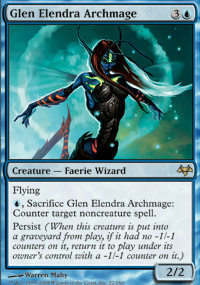 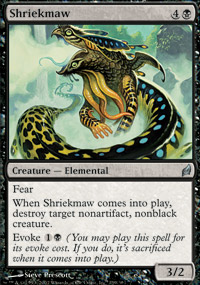
They do this in an attempt to play two different sides of The Metagame Clock at the same time. These are perfect examples of creatures that can either beat on people or can kill things and stop spells. The Quillspike deck has its combo, but if you’re just going to play Counterspells, then the Quillspike deck will use Glen Elendra Archmage to mess you up. While attacking you. Shriekmaw breaks up creature combos (including another Quillspike deck’s Druid!) or attacks. Or both.
If you’re really ahead of the curve, you might be thinking back to that blue-white control deck I talked about a moment ago. You might be thinking, sure, it beats aggro with Wrath, and it beats combo with Counterspells -- but if we play control against it, do we not win? You might be thinking, I bet the blue-white control deck played some sort of aggro-control cards, too. That way it could also beat control. Well, if that’s what you were thinking, you’re right.
Blue-white control type decks often play this guy. Meddling Mage himself acts like living aggro-control. He can attack just fine, and he also stops a key card just by existing. Back when the blue-white control deck became blue-white-red so that it could play Goblin Trenches, it still played Meddling Mage.
When you start thinking about how to make your wonderfully consistent deck beat the things it consistently loses to, and you start thinking about this in terms of how to make your deck beat entire types of other decks, then you’re stepping away from being a noob and you’re starting on the road to making truly good decks. The noobs who know enough to put types of cards together into merely consistent decks just shrug or throw up their hands when they encounter a deck that crushes theirs. It’s the next level when you start giving decks the tools they need play more than one position on The Metagame Clock.
[Continued in next post]
-
Douglas Buel
United States
Saint Louis
Missouri
-
Who Are You
Let’s go back to our player. Now he doesn’t just throw creature types together and call it a deck. He understands about the metagame, and even better, he understands that he doesn’t have to just huddle on one position of The Metagame Clock. His decks can do more than one thing.
He still faces a major obstacle. Sometimes he still loses when he could win. Let me give you an example. Our friend has decided to build a deck that can kill creatures with mass removal, and it can counter spells. His deck can play midrange, and it can play control. He sits down to play.
The opponent plays a handful of creatures. They start attacking. Our friend says, oh, I can deal with aggro. The moment he has enough mana, he taps all his lands and kills the opponent’s creatures even though he still has a few turns to live.
On the very next turn, while our friend has all his mana tapped, the opponent plays a combo and wins.
Our friend’s deck can play two different sides of The Metagame Clock, but that doesn’t mean that our friend always knows which side to play at any given moment. He knew enough to know that midrange beats aggro and that control beats combo. But even though our friend’s deck can play two different sides of the clock, so can his opponent’s deck. Unfortunately, this keeps happening to our friend every time he draws a mass removal spell while the opponent has creatures out. Our friend can’t resist playing everything he draws.
It’s not enough to have a good deck. Once everybody has a good deck, you’re going to have to have skill.
To this point, a fellow named Mike Flores once wrote an important Magic article called “Who’s the Beatdown.”
http://www.starcitygames.com/php/news/expandnews.php?Article...
In this article, Flores explained something very important. In each two-player game of Magic, one of you has to win in the short run while the other can win in the long run. The ability to win in the long run has come to be called “inevitability.”
Our friend blundered here by misunderstanding who has to win in the short run and who has inevitability. The opponent in this matchup can win in the short run with his combo. Our friend can’t. He has to win in the long run. What he should have done is go ahead and take some damage until he has enough mana to destroy the opponent’s creatures and counter a key spell.
He can’t just play midrange simply because he drew a mass removal spell while the opponent had creatures out. The deck may be good, but you can’t let it play for you. You have to do the playing. In each game, you need to understand your role. If you can’t win in the long run, you had better press every advantage. Conversely, if you can’t win in the short run, you had better prolong the game as much as possible. Don’t just jump at every perceived advantage. Our friend assumed that the object of the game was to blast his midrange spell at the opponent’s creatures as fast as possible. But it’s the opponent who has the short game. Our friend doesn’t win in the short run despite his seeming midrange advantage, as he finds out when a combo catches him tapped out. The other deck is also playing two positions on The Metagame Clock.
Let’s say there are two decks. One deck is filled with creatures that have flying (can’t be blocked except by other fliers). The other deck is filled with creatures with shadow (can’t block or be blocked except by other creatures with shadow). These two decks can’t block each other at all. Both players lay down creatures and attack as fast as they can.
They’re racing. And only one of them can win this race. The player who can’t win the race had better realize it. He’ll need to do something other than race, because if he just races, he loses. He’ll have to use his mana each turn for something other than just playing creatures as fast as he can. Even though his deck normally is the beatdown, this time, it isn’t. This time the other player is the beatdown, and the player who can’t win the race will have to be more controlling.
If he realizes this, he might win. He will use his mana to maybe kill creatures and stay alive. If he never figures it out, he will lose with a useless army on the table.
Now, as a casual Magic player, he could change his deck so that he always wins in this situation. He could completely rebuild the deck so that “Now it beats that other deck.” But he may not have to. If his deck is already good, then the tools to win are already there. The key to beating the other deck is knowing his role in the matchup and acting accordingly. He just has to realize his role in each matchup.
This is the difference between play skill and merely playing good decks.
How Many Good Decks Are There?
So, what is a good deck? You know what an aggro deck is. But what is a good aggro deck?
Take two aggro decks. One of them is good and one of them is terrible. The good deck obviously will win most of the time even though they’re on the same position on The Metagame Clock.
New players who are building their own decks often outsmart themselves by trying to reinvent the wheel. I can’t tell you how many times I’ve seen a player with a deck that could be so much better than it is, if only the player knew about the others that came before. In other words, with a deck that’s a horrible version of a great archetype.
If you think of an idea for a deck, and the idea is any good, then there is another good deck that came previously that is similar. I promise. There just is. It may not use the same cards, but it uses the same principles. The fact is, there are only so many good decks.
Nine, actually.
Remember when I mentioned Mike Flores and his Who’s the Beatdown article? Well, he wrote another very important article as well. There are several people who have written numerous important Magic articles over the years, and Flores is one of them. The one I’m about to talk about now was called “Finding the Tinker.” In it, Flores explained that there are certain deck archetypes that get rebuilt over and over with different cards.
http://www.wizards.com/sideboard/article.asp?x=sb20010607a
I agree. Basically, any good deck that you might build is just an attempt to re-create one of these nine, even if you don’t realize it.
Most people don’t want to just copy someone else. I don’t blame them. I don’t want to, either. But there’s a difference between copying someone else and taking the time to learn what others did before you. I don’t see a point, in the long run, in building what turns out to be a massively inferior version of a deck that came before. By learning how the great archetypes coped with their obstacles, you can avoid the traps that make your deck mediocre.
Furthermore, some of the great archetype decks may be deck types you’ve never heard of. It would be good to hear about them. I’m going to talk about these archetypes briefly.
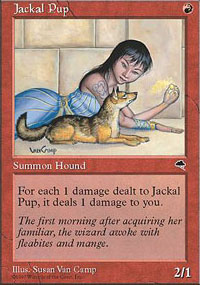 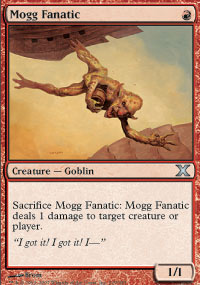 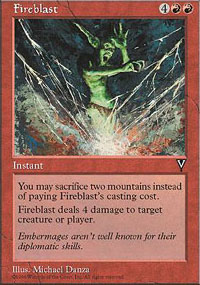 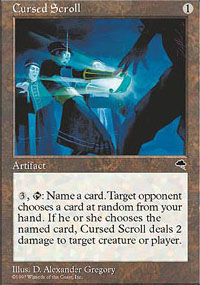
Sligh
The Sligh deck was named after Paul Sligh, who ran the deck at a pro tour qualifier. He didn’t invent the deck, but sometimes you get your name on a deck even though you didn’t invent it. Sligh was a red deck that used cheap red creatures to attack, and then had burn spells to either get rid of blockers or to finish you off. It generally wins by being faster than the other deck.
As an aggro deck, it would normally fall prey to midrange. However, its burn spells allowed it to finish you even if you dealt with its creatures. In this way, it could get around midrange with the “combo,” if you’ll pardon the stretching of the term, of several burn spells to your face.
The mistake I see in new players trying to build an aggro deck is that it’s often Sligh without the good burn. The Sligh decks were at their best when the burn was at its best: Fireblast and Cursed Scroll, for example. I see new players trying to build this sort of deck without any means of removing blockers or of hurting the opponent after a midrange Wrath, and it’s awful.
[Continued in next post]
-
Douglas Buel
United States
Saint Louis
Missouri
-
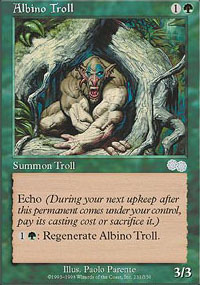 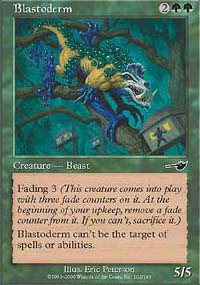 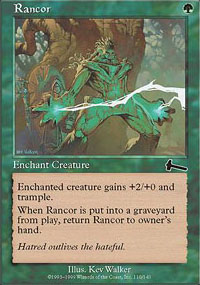 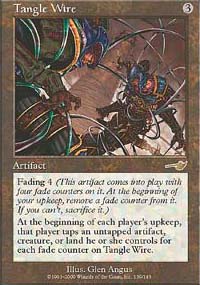
Stompy
Stompy is Sligh’s big cousin. The Stompy deck ran big green creatures that didn’t care about blockers because the attackers often had trample. If they didn’t have trample built in, then Stompy would play Rancor to give them trample. Now, when I say big green creatures, I don’t mean seven-mana gargantuans. The good Stompy deck ran Albino Troll, and it’s a 3/3. Its largest creature was Blastoderm, which was a 5/5 for four mana. Stompy has to be extremely fast to be any good. It can’t afford to play fun seven- and eight-mana monsters.
Building a really good Stompy deck is actually tremendously difficult despite how simple the principle is. How do you beat midrange? You don’t have burn, so if all your dudes die, you’re in trouble. Well, the answer back in the day was to use a mana-denial card such as Tangle Wire. This allowed Stompy to play control at the same time. Tangle Wire tapped down the opponent’s lands. If the opponent doesn’t have mana, then the opponent can’t play his big midrange card to kill all the creatures.
Stompy really doesn’t have to be green. There’s a pretty cool deck right now called Dragon Stompy -- it’s red and relies on flying instead of trample. It still would have a problem with midrange, so it uses its own control cards such as Trinisphere and Chalice of the Void. Different color, but same obstacles and similar solution. There’s also Angel Stompy, which is white and often uses Armageddon, and so on.
If new players build Sligh without the good burn, they also build Stompy without the trample (or flying) and without any Backup Plan for dealing with midrange. It doesn’t occur to them to run Tangle Wire or Winter Orb or Trinisphere and so on in their aggro deck. If they only knew the precedents. This is why it’s good to know what people did before you.
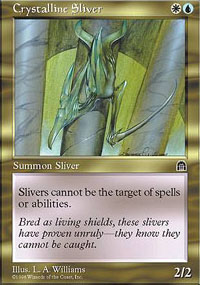 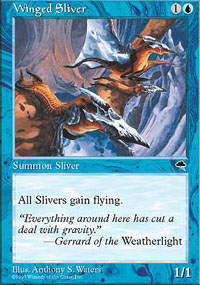 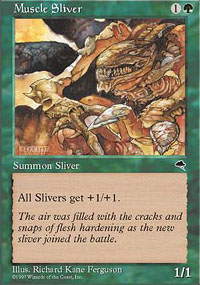 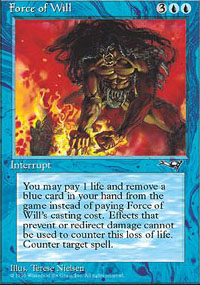
Counter Sliver
Slivers are these creatures in Magic that give one another bonuses and abilities.
The good Sliver deck, Counter Sliver, would get out these creatures. You couldn’t target them because of Crystalline. Winged would let them fly over your blockers’ heads. Muscle made them kill you faster.
The Counter Sliver deck played plenty of Counterspells, including the awesome Force of Will. Forget about just trying to mindlessly play midrange against it. Or playing combo against it. It was having none of that.
As I write this, the Faeries deck is very strong in Standard Magic. Faeries is very close to Counter Sliver. First of all, it plays numerous flying threats and plenty of Counterspells. It can even go midrange by playing Cryptic Command to tap all of your creatures. Cryptic Command even counters one of your spells as it does this! Able to play three different positions on The Metagame Clock without too much trouble, it’s no wonder that Faeries is a great deck.
Since many new players get exposed to the Faeries deck, they get familiar with this archetype very quickly. I don’t really see noobs building bad versions of this deck very often.
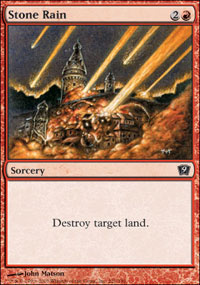  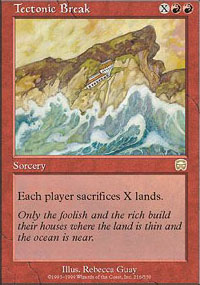 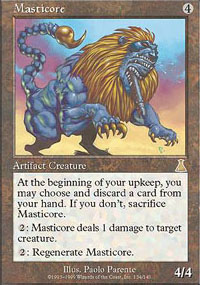
Prison
One day, it occurs to a new player that if his opponent doesn’t have mana, he can’t play spells. We don’t want our opponent playing spells, do we? Of course not. So a lot of new players realize the idea of the prison deck intuitively. Prison decks involve some method of denying mana to the opponent. Maybe they use Winter Orb. Once upon a time, they used Stasis.
For a short while, there was a really good prison deck in a Standard Magic environment that was quite crowded. They called the deck Ponza. The original name was Ponza Rotta Red, a name that I’m sure has an interesting story behind it. Sorry, but I don’t know the story.
Anyway. Ponza used Stone Rain, Pillage, Tectonic Break and other land destruction spells to keep the opponent from doing anything. However, those aren’t the only spells that were key to the deck. It also ran Cave-In, which could kill any tiny creatures that made it onto the table (without the Ponza deck having to stop and pay mana!), and most important, it ran Masticore.
Once Ponza had enough mana and had blown up a lot of the opponent’s lands, Masticore would seal the deal. Any little creature that still made it onto the table simply got killed by the Masticore. It didn’t take the Masticore too many hits to finish off the opponent.
I see new players trying to build prison decks all the time. Usually, they’re missing the mass removal and they have nothing resembling Masticore. Prison decks simply need to be able to kill little creatures. You can’t just throw a bunch of land destruction spells into a deck and expect it to work.
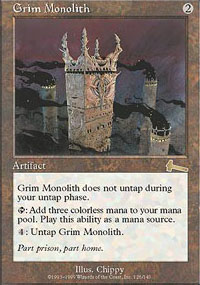 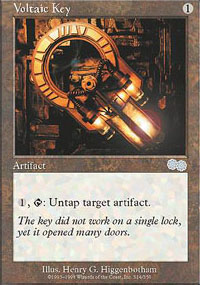 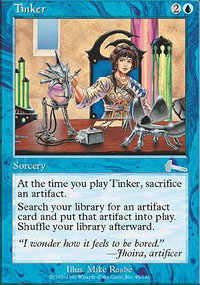 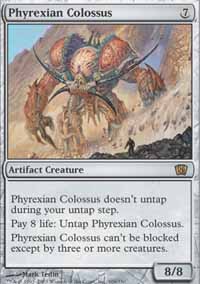
Tinker
The original Tinker deck used the card Tinker, along with fast mana, to rapidly put a deadly threat on the table. It overwhelmed its opponent with speed and a super-powered threat. With two mana you have a Grim Monolith, and then if you play another land next turn, you have six mana. And that doesn’t even consider whether you have a Voltaic Key on the table to make Grim Monolith even more ridiculous.
The thing to realize, and the point of Flores’ article, is that the key to the Tinker archetype wasn’t the Tinker itself. It was the mana. The rapid mana is the real backbone of the Tinker archetype. Tinker itself helped by finding the threat you need and by cheating on mana, but the fact is that the deck had fast mana without the Tinker itself.
Sometimes, new players will build a deck with a lot of mana-making Elves and Fireballs. They’ll try to get to 21 mana as fast as possible, and then blast the opponent with a Fireball. They call this deck “Elf Ball.” Well, Elf Ball is really a type of Tinker deck. Or I suppose you could say that Tinker was a type of Elf Ball deck, since Elf Ball actually came first. Either way, decks that use rapid mana to play relatively expensive but ultra-deadly threats are this archetype.
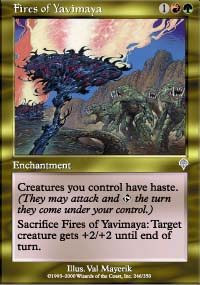 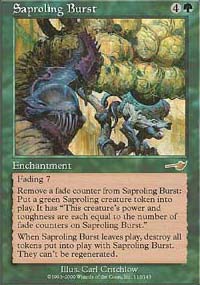 
If you read Flores’ article, you’ll see that he considered the Fires of Yavimaya deck a Tinker-type deck. It used Birds of Paradise and Llanowar Elves to rapidly play Blastoderms and Saproling Burst. These threats would have haste because of Fires of Yavimaya. Saproling Burst with haste makes three 4/4s that attack for 12 that same turn. The deck had fast mana, but it didn’t need a card like Tinker to search out its threats because it played so many threats that it was guaranteed to draw one.
The enemy deck for the Fires of Yavimaya deck at that time was the blue-white control deck. These decks did a wonderful dance with each other on The Metagame Clock. Fires could go aggro with its creatures. Therefore blue-white control could play midrange with Wrath. But then Fires could play combo with the Fires of Yavimaya card itself and Saproling Burst. So blue-white control could play control and make sure it countered the Burst or the Fires. So then Fires could go pure aggro to beat control. You see? This was Magic played by two ferocious decks that really duel each other. Like a tiger and a dragon, endlessly battling.
When new players try to build a fast-mana-then-kill-you Tinker-type deck, they usually don’t have enough threats. They don’t draw the threat they need to win the game, and they don’t have a card like Tinker that helps them get their threat out of their deck. Then they lose.
[Continued in next post]
-
Douglas Buel
United States
Saint Louis
Missouri
-
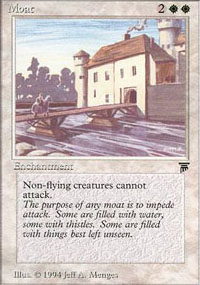  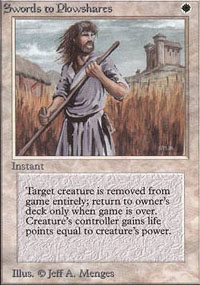 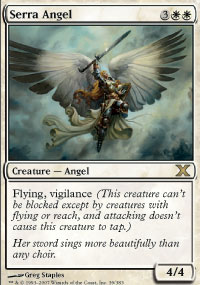
Weissman
New players will often become fond of Counterspells and will try to build a deck that doesn’t let their opponents do anything, but not by blowing up lands. The grandfather of this idea was the deck type they call “Weissman,” after Brian Weissman. The Weissman deck assembled an unassailable fortress. The opponent could not attack, because of Moat and because Serra Angel could still block after it attacked. The opponent could not combo, because of Counterspells. The opponent could not keep out creatures that did other nasty things besides attacking, because of removal spells like Swords to Plowshares. In other words, we’re talking about total control.
Notice that Moat plays the role of midrange. Against many decks, it just stopped all the creatures all by itself. Serra Angel itself acted as a type of midrange card, because she scares several 2/2s at once into not attacking back. Therefore, this deck could play both control and midrange with no problem.
Sometimes they call this deck “The Deck” in the Vintage format.
The blue-white control deck I talked about earlier is this type of deck. This deck is difficult to build and difficult to play, but that doesn’t stop new players from trying, bless their hearts.
There was a decent version of it in Standard that was all blue. They called it “Draw-Go,” because each turn you would just draw your card and say “go” -- your plan was to play all your spells on the opponent’s turn, since most of your spells were instants. “Draw-Go” was successful, but it used both Morphling and Masticore to help it play midrange.
As you can see, Morphling can act as a Serra Angel because you can attack with it and then untap it to block. It’s far, far deadlier than Serra Angel, actually. Because you can make it untargetable, it’s almost impossible for the opponent to get rid of. You can raise its power to 5 on the attack and then raise its toughness back to 6 or even higher if it might get killed. Morphling is simply one of the best creatures of all time. And I told you about Masticore before -- it’s also a real terror, dealing with aggro by outright killing enemy creatures.
The new players who try to build a total control deck usually mess it up by not having any sort of midrange method of dealing with aggro. They don’t play a Wrath, or a Moat, or a Morphling or a Masticore. Aggro decks run all over them.
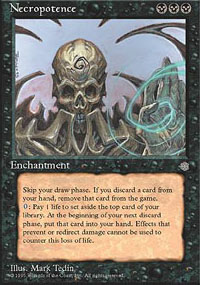 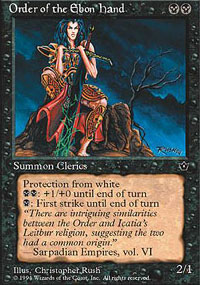 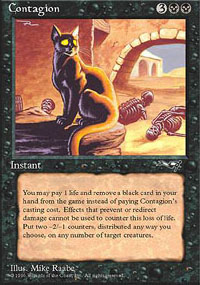 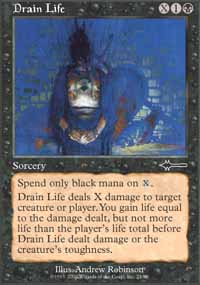
Necro
The Necro deck uses some sort of means of drawing extra cards. It then uses all these extra cards to keep up a deadly and unrelenting onslaught. The original Necro deck would play life to draw extra cards with Necropotence. It would then have plenty of lands to keep Order of the Ebon Hand getting meaner every turn, and plenty of extra cards with which to play Contagion for free to kill enemy blockers. If it started to run low on life due to Necropotence, no problem -- Drain Life kept them right in the game.
The actual Necropotence card is one of the best card-drawing cards ever printed. Eventually, it was banned from nearly every format. Even in Vintage Magic, you’re only allowed to play one in your deck instead of four. But there have been other aggressive decks that have used a great card-drawing engine to fuel their attack. Take a look at this card:
You can see that Dark Confidant draws you an extra card every turn. Sure, it’s killing you while it does, but as long as you’re killing the opponent even faster, who cares? Just keep attacking in a fury!
I’m not sure if anyone will build a Necro-type deck as good as the original Necro anytime soon. The Magic designers are very careful not to print a broken card-drawing card in modern Magic sets.
With most new players, this type of deck doesn’t really occur to them, so I don’t see them building it badly or otherwise. Sometimes you’ll see a new player put a card-drawing card into an aggro deck:
But this is nothing like Necropotence, and the players usually don’t play the means to take advantage of it anyway. For the Necro deck to work, it has to draw berserk amounts of cards, get the most out of its mana and have really great ways to take advantage of drawing all those extra cards. Without those things, it’s just an aggro deck and it gets crushed by midrange.
By the way, the best deck ever to use Necropotence wasn’t this sort of deck at all -- it was a combo deck. I’ll talk about that in a moment.
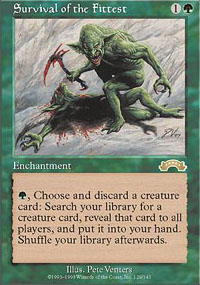 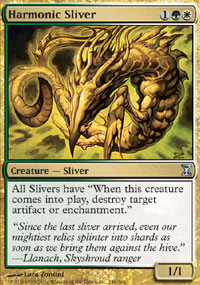 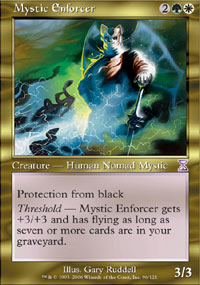 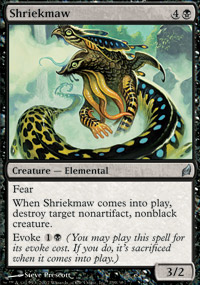
Toolbox
I almost never see new players who have a concept of this deck. The toolbox-type deck is sort of the opposite of the Weissman deck. If the Weissman deck has unassailable defense, the toolbox deck has unstoppable offense. That’s not because the deck is swift -- it’s because the deck plays one of this creature, one of that creature and one of another creature and has some means to go get them.
If your deck can’t stop fear, toolbox gets out an attacker with fear. If your deck is black, toolbox gets out a creature that has protection from black. If your deck needs enchantments to stay alive, toolbox gets out a creature that kills enchantments. If Weissman has a solution for every problem, toolbox has a problem for every solution.
As I said, I don’t really ever see people trying to build this deck. So, I don’t see people trying to build bad versions of it. This sort of deck can be extremely hard to build. It just doesn’t occur to most people to try. The key to this deck is not only what one-of cards to put into it, but also to have a great means of getting those cards when you want. Survival of the Fittest has long been a powerful engine for this, but there are others.
[Continued in next post]
-
Douglas Buel
United States
Saint Louis
Missouri
-
 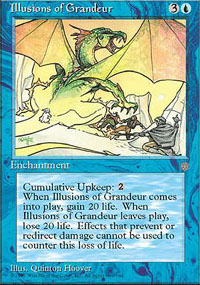 
Combo Deck
If you read Flores’ article, his ninth archetype deck he called “The Enigma.” I’m going to go ahead and say that the ninth sort of deck is really just the true combo deck.
One of the greatest combo decks of all time was called “Trix.” It would use Illusions of Grandeur and Donate. Here’s how it worked. It would play Illusions of Grandeur and gain 20 life. Then it would play Donate and give the Illusions of Grandeur to the opponent. The opponent was now responsible for paying the cumulative upkeep on the Illusions of Grandeur.
You see how Illusions says that when it leaves play, you lose 20 life? Once the Illusions was given to the opponent, “you” was him. That’s right. If Illusions left play, it’s the opponent who would lose 20 life, because he had been Donated the Illusions.
Eventually, the opponent couldn’t pay for the cumulative upkeep, so the Illusions would leave play. The opponent was dead.
What made the deck really incredible was that it played Necropotence to draw its cards. It would pay tons of life to draw cards with Necropotence, but then when it played Illusions of Grandeur, it gained back the life it paid and more because Illusions gives you 20 life when it comes into play. Among the cards it drew were Force of Will, which it could then play for free to ensure it got to Donate the Illusions to its opponent.
This deck won by being fast, but it also played control with Force of Will. Even if you attacked the deck as fast as you could, the fact that it gained 20 life from the Illusions made it hard to kill it. In this way, playing Illusions itself almost acted like midrange against some aggro decks. So the deck had a tiny bit of midrange, a killer combo and a fair amount of control. That’s quite a bit of The Metagame Clock.
There have been plenty of other nasty combo decks over the years. A lot of the fun of Magic is thinking of combos yourself.
Most new players that I see who try to build combo decks don’t have enough of a means of ensuring that the deck isn’t stopped by control. Just having a deadly combo isn’t enough, because control still just stops you cold.
In Conclusion
There are several principles I hope I’ve left you with when it comes to building Magic: The Gathering decks and playing Magic.
First, I hope you understand that even if your deck is consistent and even synergistic, that hardly means it’s good. Truly good decks are more than just consistent. They have a means of playing more than one position so that they don’t simply always lose to another type of deck. Understanding The Metagame Clock means you’ll intuitively have an idea of what strategy you’ll need to use to beat another strategy.
Second, I hope you’ve taken with you the concept of knowing your role in a matchup. Once you’re playing good decks that can do more than one thing, you’ll need to know which thing to do at any given moment. This will depend upon which player, your opponent or you, must play for the long-term advantage and which player must therefore press the short-term advantage. If the long game belongs to your opponent, you must “go for it” and strike while you can. Conversely, if the short game belongs to your opponent, you must be careful to play for the long term and not suddenly get beaten by a play.
Third, I hope I’ve been able to explain that there are several good archetypes in Magic that have been around for a very long time and that understanding them will help you to build better decks. If your decks keep losing, it may well be because you’re trying to build a deck that has been built before but that you’re missing a crucial element that made that previous deck work.
Have fun!
-
Jeremy Koopmans
Canada
St Albert
Alberta
-
As a new player, I found this to be a really interesting discussion of different deck types, and has definitely given me some food for thought.
At the moment, all I've got are a couple of theme decks, but I'll be looking at them with a different perspective for sure.
-
-

Longest. Post. Ever.
-
Douglas Buel
United States
Saint Louis
Missouri
-
passthedynamite wrote:  Longest. Post. Ever.
You should see some of the awesome ASL articles that have been posted. 
http://www.boardgamegeek.com/thread/361467
-
Jon Y.
United States
Fredericksburg
Virginia
-
Great stuff and an accurate summary/analysis. I had friends never get to some of the later levels of play who still had a lot of fun, but I definitely needed to keep improving to really enjoy myself.
Awesome read and I really appreciate the time you took to write this!
-
Jeremy Koopmans
Canada
St Albert
Alberta
-
I love the article, but was wondering if you could edit your posts to use the [ inlineimg ][ /inlineimg ] tags instead of [ img ][ /img ] (minus the spaces) for each group of images. I think it'll shorten the veritcal length, and make it easier to refer to the cards while reading your discussion of the deck type.
You'd end up with soemthing like this instead:
   
I learned about this trick and quite a few others from Tricks of the Geek.
-
Goldyn Gryphon
United States
Itasca
Illinois
-
Great article a good read for a casual player like myself. I buy the cards build the decks and my friends just play. I found this on magic deck vortex don't know if it's true "For those of you unfamiliar with Ponza Rotta, it was a mono-red control deck that saw some tournament play from 1996-2000. It's named after a calzone at Jimmy's Grotto in Waukesha, Wisconsin (because it has the meat, the cheese, and the sauce, i.e. big creature finisher, land destruction, and burn.)" interesting none the less. Thanks GG
-
Douglas Buel
United States
Saint Louis
Missouri
-
Jeshko wrote: I love the article, but was wondering if you could edit your posts to use the [ inlineimg ][ /inlineimg ] tags instead of [ img ][ /img ] (minus the spaces) for each group of images.
Wow, that's what I wanted all along!
Thanks 
-
Dair Grant
United States
Martinsville
Indiana
-
Great article. I was an early MtG guy, but left early on, before a lot of these decks originated. I came back later on a casual basis, but still only really knew a few of the nine archetypes you describe.
I moved on to competitive Vs. and it is interesting for me to try to see how your tenets fit into that game. (Some well, others not so due to the restrictions in deck building in Vs. compared to Magic.)
I've been saving GG for an avatar, but I gave you my first tip, and it was well deserved.
-
Jeremy Koopmans
Canada
St Albert
Alberta
-
dbuel wrote: Wow, that's what I wanted all along! Thanks 
You're welcome 
-
Mark McEvoy
Canada
Mountain
Ontario
-
Fantastic article, thanks for posting it.
Was somewhat surprised to see the absence of mention of Prosperous Bloom, and only a single mention of Stasis... near the end of my time as a Magic player, CadBloom and TurboStasis were dominant. And, as I understand it, TurboStasis even had somewhat of a Second Wind when Gush hit the scene.
-
Douglas Buel
United States
Saint Louis
Missouri
-
thatmarkguy wrote: Fantastic article, thanks for posting it.
Was somewhat surprised to see the absence of mention of Prosperous Bloom
Well, there are a lot of combo decks, and there have been a lot over the years. I didn't mention Hulk Flash, either, which is probably the most dominant combo deck of all time.
I chose Trix to talk about as a representative for combo decks because, first, it's so pure as a combo, consisting of only two cards that together normally kill the opponent, and second, it allowed me to highlight how backing up the combo with Force of Will and churning out the combo with Necropotence is what allowed it to dominate in its day.
You could definitely write a whole article on the great combo decks in Magic. 
-
-
dbuel wrote: thatmarkguy wrote: Fantastic article, thanks for posting it.
Was somewhat surprised to see the absence of mention of Prosperous Bloom Well, there are a lot of combo decks, and there have been a lot over the years. I didn't mention Hulk Flash, either, which is probably the most dominant combo deck of all time. I chose Trix to talk about as a representative for combo decks because, first, it's so pure as a combo, consisting of only two cards that together normally kill the opponent, and second, it allowed me to highlight how backing up the combo with Force of Will and churning out the combo with Necropotence is what allowed it to dominate in its day. You could definitely write a whole article on the great combo decks in Magic. 
BTW -- Great Article!
I don't know about Hulk Flash being the most dominant combo deck. Once we start talking about combo decks, there are definitely trade-offs to be considered. Hulk Flash is perhaps the fastest combo deck; however, it is pretty easy to disrupt. I would concede though that it is the most powerful combo deck in the sense that it warps the metagame to such a degree that if you are not prepared for it you don't have a chance.
Maybe there should be an article on combo decks and strategies....
-
Douglas Buel
United States
Saint Louis
Missouri
-
steinley wrote: I don't know about Hulk Flash being the most dominant combo deck. Once we start talking about combo decks, there are definitely trade-offs to be considered. Hulk Flash is perhaps the fastest combo deck; however, it is pretty easy to disrupt.
Well, it depends upon your definition of "dominant." Hulk Flash required the emergency banning of Flash. So it wasn't a legal combo deck for a very long time. But when it was legal, it was utterly sick.
Jar would have been dominant, but it was never legal! 
So I suppose there's a difference between theoretically dominant and dominant over time.
If we're just going by time, we might go back to Trix. Trix dominated extended for quite a while. When they finally banned Dark Ritual and Necropotence in extended, Donate/Illusions was still a good deck -- it just became monoblue. 
-
Daryl Wilks
United States
Peshastin
Washington
"Love one another."
-
Great post! Although I'm on a temporary hiatus from magic, you remind me what a great game this is. Too bad it gets the PR shaft for being collectible (rightly so) and for the brokenness and rules problems (not rightly so - it's much better in recent history). I think Magic is currently the most well-designed game out there and it just keeps getting better. It does not get enough credit. The many variants open up new ways to enjoy this diverse game. Right now we are starting to explore Elder Dragon Highlander. Fun stuff!
-
spags
United States
Ill Mil
Wisconsin
-
What I know about MtG is that it can be expensive.
Seriously, though, great article.
-spags
-
Garcian Smith
United States
Northridge
California
-
Informative, interesting and juicy.
-
-
Good work! This was something nice to read although I don't really agree with some of the stuff. That whole idea of aggro beating control beating combo or metagame clock isn't really how it goes nowadays. At least in tournament magic where your main goal is to attack metagame and the deck to beat.
I don't really appreciate Mike Flores. He is just wrong all the time. For example you could check his article on mtg.com about the best cards of shards of alara. That was something...
I have been out of casual play so long that I don't know how that works nowadays but that "nine archetypes"-thinking is a bit limited. It is true that in deck building it is good to know about already existing decks but nine archetypes really isn't the whole story. In that list there are zero tempo based decks (best examples would probably be Ghost dad and UGW and UWR Blink decks). That was just an small example. There are a bunch of decks in different formats that doesn't really fit in those categories. Block constructed is typically a format that generates unique metagame decks.
Winning bad matchups, winning mirrors and metagaming. That is what tournament Magic is all about. At least in my opinion. Everybody should
still read this article, it is about the best game.
-
Chris Heap Senhouse
United States
Somerville
Massachusetts
-
I was sad to see that I wasn't credited as having created the Counter Sliver archetype. I came up with the idea on the flight back from GP San Francisco trying to come up with a deck that could beat both Sligh and High Tide (the brutal combo deck of the time). Worship in the sideboard meant red had a hard time winning 2 out of 3, and Force of Wills with a clock made it tough on High Tide...
Chris Senhouse
-
Simon Johnston
United Kingdom
Isle of Wight
-
dbuel wrote: I’m not sure if anyone will build a Necro-type deck as good as the original Necro anytime soon. The Magic designers are very careful not to print a broken card-drawing card in modern Magic sets.
Except when they forget, and then we got Skullclamp.
-
|
|

